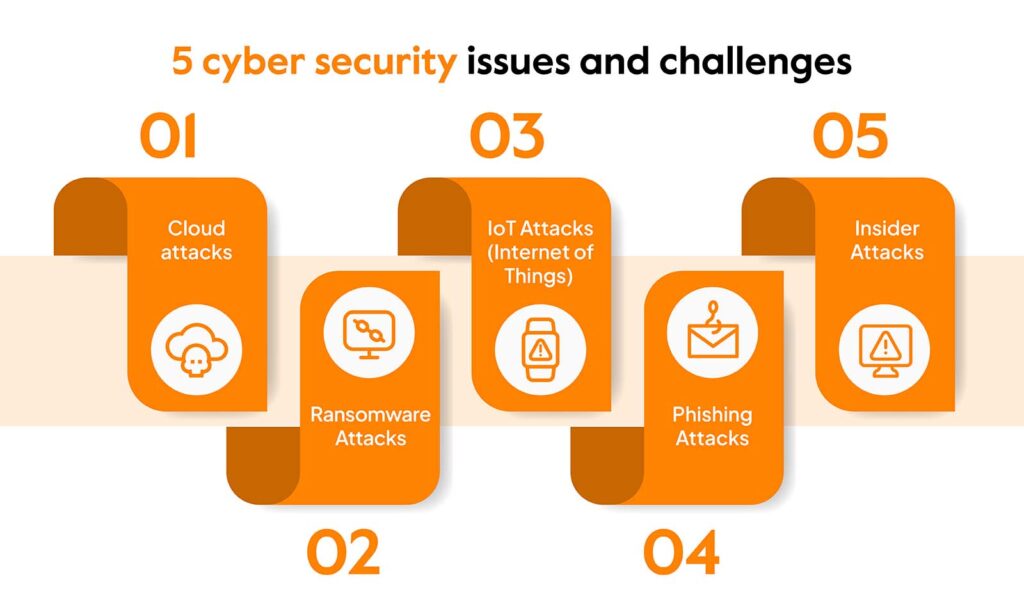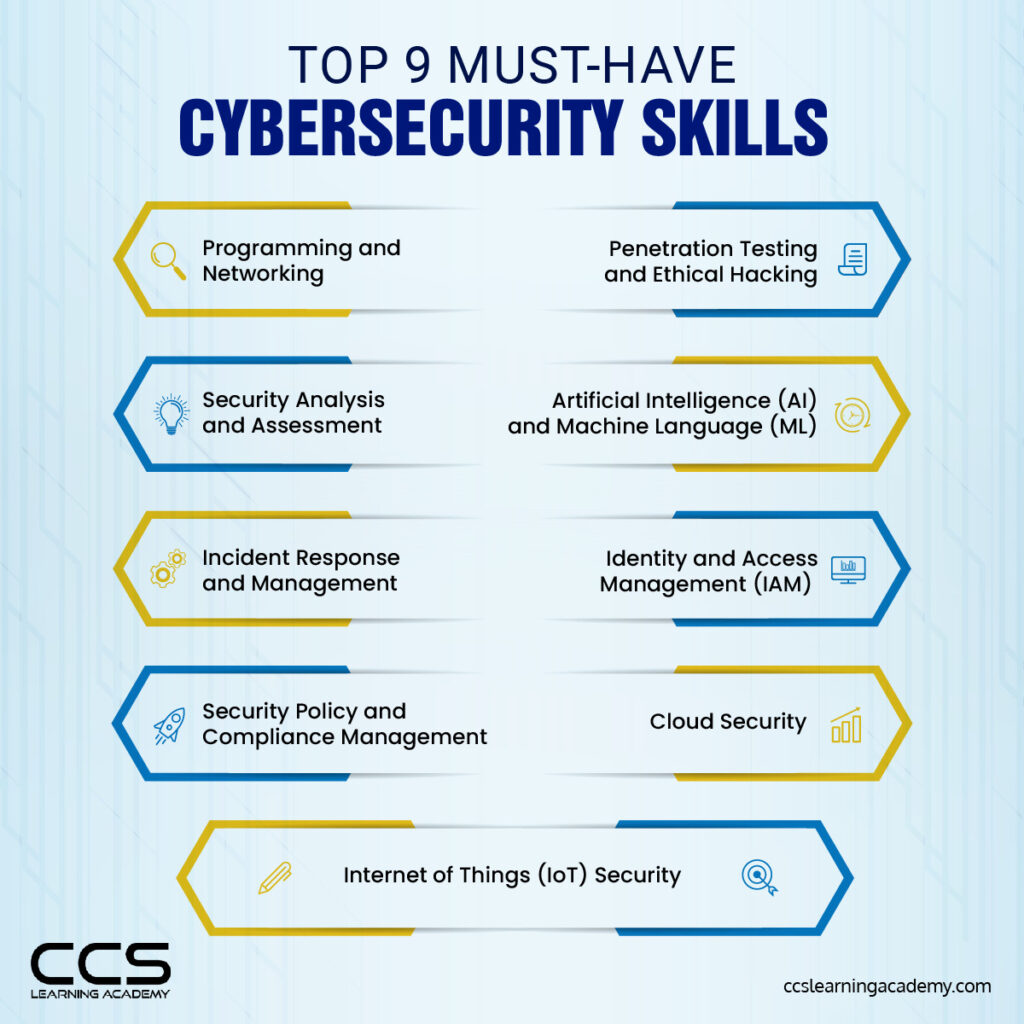The digital age has ushered in transformative technological advancements, but with them comes a growing wave of cyber threats. Organizations across industries are grappling with the urgent need to fortify their cybersecurity frameworks. The solution lies not just in acquiring new talent for cybersecurity jobs but in reskilling existing workforces to meet these challenges.
This comprehensive industry report explores the current cybersecurity landscape, highlights the skills gap, and provides actionable strategies for corporate HR departments to implement effective reskilling initiatives. It also identifies essential skills for 2025, showcases case studies of successful efforts, and discusses how JobsPikr can support these transformative initiatives.
Navigating Cybersecurity Issues & Challenges

Image Source: sprinto
How the Cyber Threat Landscape is Shifting?
Cyber threats are growing both in sophistication and frequency. The Check Point Research Report reported that cyberattacks on critical infrastructure increased by 38% last year, a trend expected to accelerate in 2024. Industries such as healthcare, finance, and e-commerce are particularly vulnerable due to the high value of sensitive data they manage.
Key challenges include:
- Ransomware Attacks: These now account for 70% of all malware-based breaches.
- Phishing Scams: AI-driven phishing campaigns are more targeted and harder to detect.
- IoT Vulnerabilities: With over 75 billion IoT devices expected in use by 2025, their security remains a critical concern.

Image Source: Statista
The Cost of Cybercrime
According to Cybersecurity Ventures, the global cost of cybercrime is expected to rise from $8.4 trillion in 2022 to $10.5 trillion annually by 2025. These losses stem not only from direct financial theft but also from reputational damage, regulatory penalties, and disrupted operations.
The Growing Skills Gap in Cybersecurity

Image Source: Vervoe
The cybersecurity talent shortage is a persistent challenge. The (ISC)² Cybersecurity Workforce Study revealed that the global cybersecurity workforce needs to grow by 65% to effectively defend organizations. The shortage is particularly acute in emerging areas like cloud security and AI-based threat detection.
Key Statistics:
- Over 3.4 million unfilled cybersecurity jobs globally in 2023.
- Only 1 in 3 companies feel confident in their team’s ability to mitigate cyber risks.
The Risks of Ignoring the Skills Gap
Failing to address this gap can have severe repercussions:
- Increased Breach Frequency: Organizations with inadequate cybersecurity staffing experience breaches 2x more frequently.
- Slower Incident Response: A lack of skilled professionals extends breach recovery times, compounding financial and operational losses.
- Regulatory Non-Compliance: Industries bound by stringent regulations, such as GDPR or HIPAA, risk penalties due to inadequate defenses.
Reskilling Initiatives to Bridge the Cybersecurity Jobs Gap

Image Source: Hackthebox
Reskilling focuses on upskilling existing employees to meet new demands, offering a faster, cost-effective alternative to hiring new talent. For organizations struggling to recruit cybersecurity professionals, reskilling their current workforce provides an invaluable solution.
Top Reskilling Practices for Workforce Transformation
- Identify Skill Gaps: Conduct thorough skill gap analysis to pinpoint areas of vulnerability.
- Create Tailored Programs: Align training initiatives with industry-specific cybersecurity needs.
- Incorporate Certifications: Encourage employees to pursue certifications such as CISSP, CEH, and CompTIA Security+.
- Leverage Technology: Use AI-driven learning platforms and virtual cyber ranges to enhance training efficacy.
Tools for Effective Reskilling
- Cybersecurity Labs: Simulated environments for hands-on learning.
- Gamified Learning: Platforms like Cyberbit use gamification to teach threat mitigation techniques.
- Collaborations with Universities: Partnerships with academic institutions ensure access to cutting-edge curriculum and faculty expertise.
Must-Have Cybersecurity Skills for 2025

Image Source: CCSLearningAcademy
In-Demand Skills
- Ethical Hacking: More than just probing systems for vulnerabilities, ethical hacking plays a pivotal role in proactively identifying weaknesses before malicious actors can exploit them. It’s a vital skill for organizations aiming to stay ahead in the cybersecurity game.
- Incident Response: This skill is about more than just technical fixes; it’s about creating robust processes to detect, contain, and recover from breaches while minimizing damage. Swift and strategic responses are critical in safeguarding an organization’s reputation and operations.
- AI-Based Security Solutions: Artificial intelligence is transforming the way we approach cybersecurity, offering predictive analytics and real-time threat detection. Professionals skilled in deploying and managing these AI-driven tools are becoming indispensable.
- Threat Intelligence Analysis: It’s not enough to react to attacks anymore. Threat intelligence involves understanding the tactics and motivations of cybercriminals to anticipate and prevent future threats, making it a cornerstone of modern cybersecurity strategy.
- Secure Coding Practices: Security is no longer an afterthought in software development. Developers skilled in writing code that’s inherently secure ensure vulnerabilities are minimized from the outset, reducing the risk of exploitation in deployed applications.
Emerging Skills
- Quantum Computing Security: With the advent of quantum computing, traditional encryption methods could become obsolete. Experts in quantum-resistant algorithms are increasingly in demand to future-proof sensitive data.
- Zero-Trust Architecture: The principle of “never trust, always verify” is reshaping how security frameworks operate. This approach minimizes the risk of insider threats and lateral movements within a network, requiring specialists to design and implement robust, dynamic access controls.
- Cloud Security: As organizations migrate to the cloud, securing data and applications in these environments has become critical. Professionals adept at managing cloud security frameworks and addressing unique risks like misconfigurations are highly sought after.
Real-World Cybersecurity Reskilling Success Stories
- IBM: Scaling Workforce Resilience
IBM’s SkillsBuild Reignite initiative reskilled over 30,000 employees globally, focusing on cloud security and AI-driven threat detection. The result was a 60% improvement in incident response times.
- Accenture: Reskilling Through Gamification
Accenture launched a gamified cybersecurity training program that enhanced employee engagement by 40% and reduced breach incidents by 30%.
- Walmart: Closing Retail Vulnerabilities
Walmart retrained over 1,000 IT professionals to specialize in cybersecurity for retail-specific scenarios. This initiative reduced fraud-related losses by $20 million annually.
Cybersecurity Salary Trends & Insights: What to Expect in 2025
Reskilling initiatives not only fill skill gaps but also open lucrative career opportunities for employees. According to reports:
- The average cybersecurity salary in the U.S. is $119,000 annually, with specialized roles such as cloud security analysts commanding even higher pay.
- Roles in AI and threat detection have seen a 15% salary increase in the last two years.
These figures underscore the growing financial incentives tied to cybersecurity expertise, making reskilling an attractive option for employees.
How JobsPikr Can Help you?
JobsPikr offers unparalleled insights into the cybersecurity job market, helping HR departments craft effective reskilling strategies. With our data-driven tools, you can:
- Analyze Job Market Trends: Understand the latest demands for cybersecurity skills across industries.
- Conduct Skill Gap Analysis: Identify critical skill shortages within your organization.
- Benchmark Cybersecurity Salaries: Use real-time data to align compensation with industry standards.
- Optimize Recruitment Strategies: Access insights into in-demand roles, certifications, and skills to attract top talent.
With JobsPikr, you can empower your workforce to meet the cybersecurity challenges and beyond.
Conclusion
The cybersecurity landscape is marked by evolving threats, a widening skills gap, and an urgent need for robust defenses. Organizations must take proactive measures to reskill their workforces, equipping them with the skills needed to safeguard critical infrastructure and data.
Corporate HR departments play a pivotal role in this transformation, from identifying skill gaps to implementing effective training programs. By prioritizing reskilling, businesses can build a resilient workforce, reduce dependency on external hiring, and ensure long-term digital security.Sign up on JobsPikr today to transform your workforce with data-driven insights.






